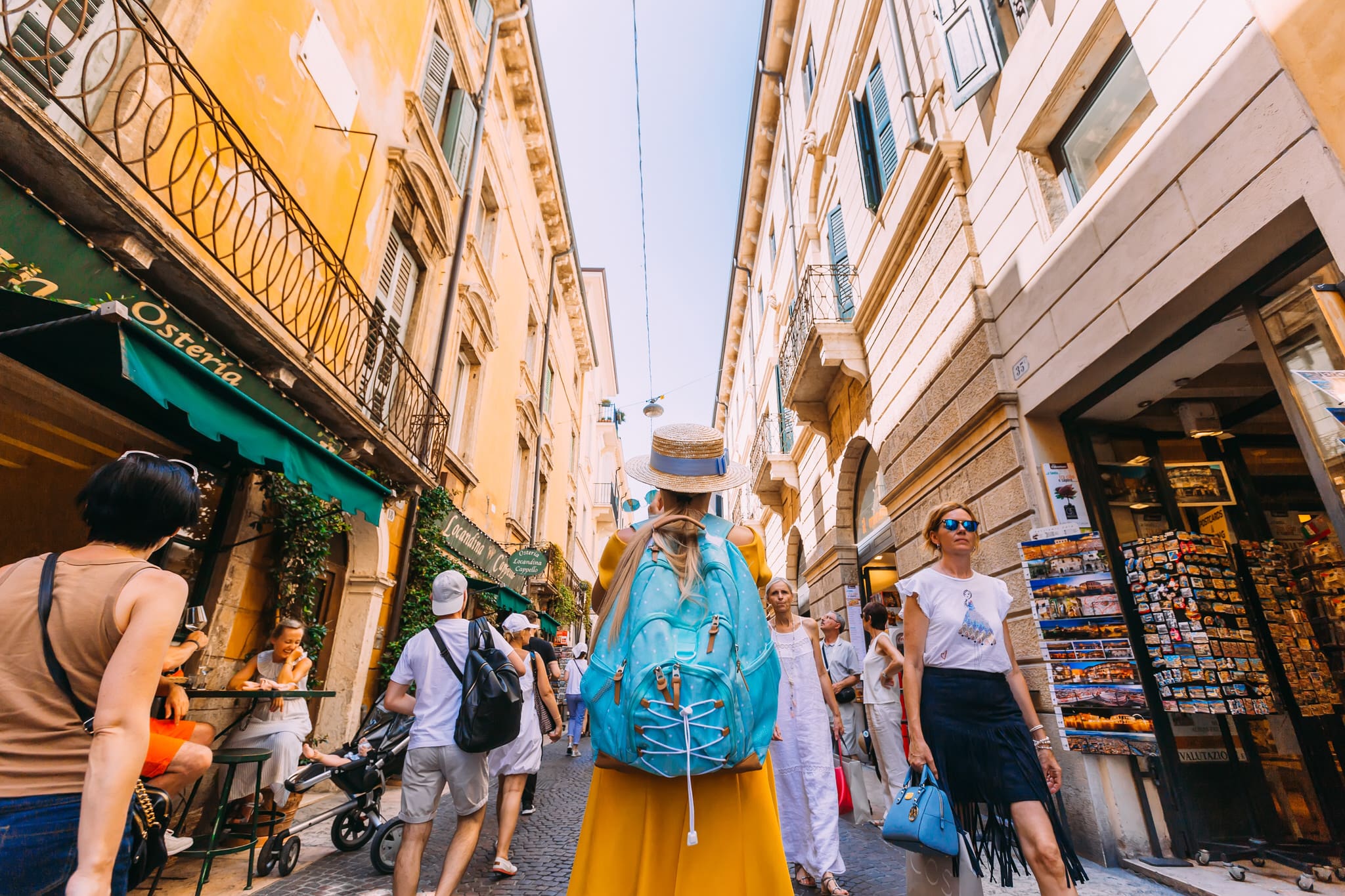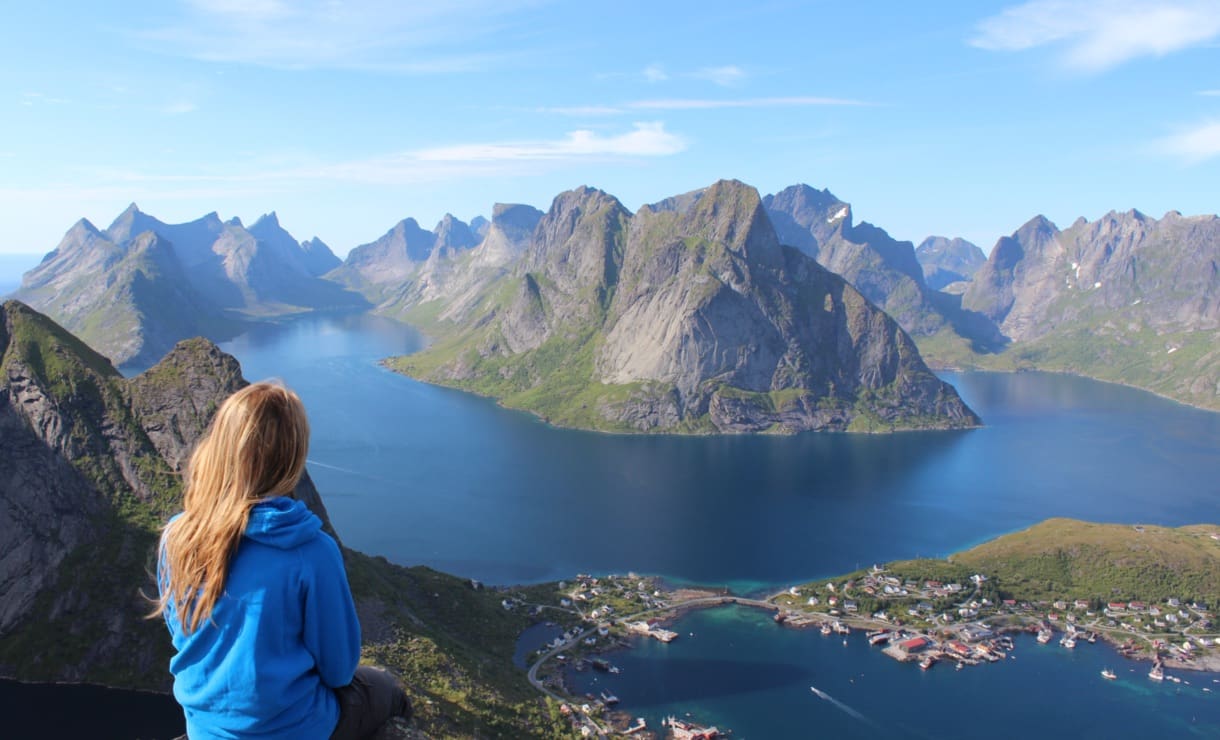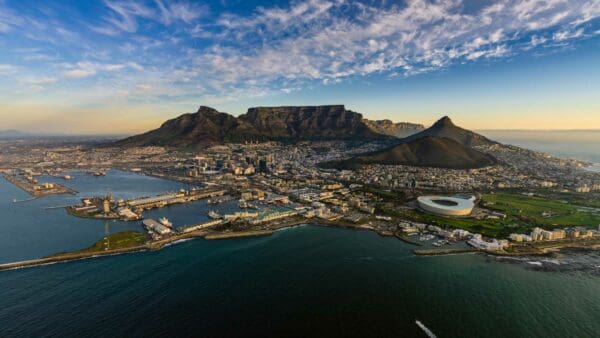 It was a week before Eric Hanson would be graduating from Northern
It was a week before Eric Hanson would be graduating from NorthernArizona University, and like many of his peers, the future held a few
unknowns. Growing up in Scottsdale, Ariz., an affluent area near
Phoenix, he felt the social pressure to launch into the business world
and make a successful living, but there was something else stirring in
his heart. It was the suspicion that what the world was offering him
was simply not enough. There had to be a deeper significance to his
time on earth.
“I
felt like I needed desperately to do something different, something
adventurous that would really capture my heart,” Hanson recalls.
A few months later, he joined more than 50 others on a journey
around the world-a yearlong mission opportunity called the World Race,
in which twentysomethings travel to at least 11 different countries and
participate in intense competitions around the globe. During that time,
Hanson and his teammates raced from location to location-sometimes
across borders-to accomplish their tasks, a la Amazing Race.
“This usually entailed seeing some historical place, a lot of
running, eating some local delicacies and anything in between,” Hanson
recalls. Details of the races were kept secret, leaving teams unable to
prepare for the events. On one leg of the race, World Racers left their
campsites overlooking a beautiful river in the jungle of southern
Mexico to make their way across the border into Guatemala, bargaining,
communicating in a tangled mess of English and Spanish and haggling for
rides along the way.
Their chaotic journey eventually led them to a glorious view of the city of Antigua and its volcano from atop a mountain.
But the World Race is not simply a chance to see the world and compete
for a bit of cash (a modest $100 for each competition). It is an
introduction to full-time ministry and a chance to serve the poorest of
the poor.
“For the most part, the World Race was not about the actual racing
element,” Hanson says. “I don’t believe a single person signed up to go
just for the race.” As they traveled from the Mayan ruins of Palenque,
Mexico, to the dumps of Nicaragua to recent church plants in the
mountains of Peru, where the team brought the Gospel to communities
that had never before heard about the work of Jesus, the experiences
were far from what Hanson had imagined.
“I had this idea of sleeping on floors, eating bugs, and that this
would be a miserable experience, and that it would be great!” Hanson
says. “I thought that the life of a missionary would be terrible. There
were plenty of times when I was like, Wow, I thought I was giving up
stuff. Then I would think, I can’t believe I get to do this. The
blessings that came back blew me away.”
In Costa Rica, the group met a lonely old man named Jose. He lived
in a house by himself, spoke very little and didn’t even know how old
he was. Hanson found out that Jose had been abandoned by his family
during his teenage years and had worked on a farm by himself for almost
half a century. He had never had a friend, wife or someone special with
whom to share his life. Moved with compassion, Hanson’s team cleaned up
Jose’s house and yard, and brought him into a loving community for the
first time in his life. They showed Jose the extravagant grace of God.
After a week of rest in Buenos Aires, Argentina, the World Racers
flew to Johannesburg, South Africa, where they worked with kids at
squatter camps, places allotted by the government for the poor and
homeless. At one camp, about 2 million people lived in six square miles
of space. “People were crammed in, with roofs of each shack touching
the next, making a sea of tin roofs as far as the eye could see,”
Hanson remembers. For the kids, the camps were a way to escape the
harsh reality of their lives; hundreds came to play games, get free
food and hear the Gospel.
It was in Mozambique, however, that the reality of God struck
Hanson in a life-changing way. He and his teammates were working with
thousands of refugees who had been forced to leave their homes on the
flood-devastated Zambezi River plain. By the time Hanson’s team
arrived, most people had not eaten anything for at least a week. Each
day the team would load up a truck with several tons of food and
distribute it to the refugees. They would bring translators with them
to the villages and blast music over a scratchy PA system to attract
people. And the people would come … and dance.
 “They would just dance for about an hour,” Hanson recalls in
“They would just dance for about an hour,” Hanson recalls in
amazement. “People who hadn’t eaten for a week would come and dance.”
One night, the team offered an invitation to accept Christ, and more
than two-thirds of the crowd raised their hands. One teammate was moved
with compassion, suggesting that they pray for anyone with chest pains.
A man in the crowd sought out Hanson and described the chest pains he
was having. Hanson laid his hand on the man’s chest.
“As we were praying, I felt something under my hand start to move,”
Hanson says. “It was on the right side of his chest, so it wasn’t the
heartbeat. [When I] took my hand away, he had this look of
bewilderment. He started exclaiming, ‘The pain is gone! The pain is
gone!’ It was at that moment that I thought, Wow, God used my hand to
heal somebody.” Hanson had always believed that God could heal, but he
never thought that it would happen by his own hand. “At that time, I
was reading the Book of Acts, but I was thinking, Does that God even
exist anymore? I knew theoretically that God could do powerful things,
but I had never seen it,” Hanson says. “That experience painted God in
a new and fresh light, as a God of redemption who is still moving in
powerful ways among us.”
The day before leaving Mozambique, Hanson, filled with a new
confidence in what God could do through him, visited Sebastiana, a
woman whose legs were so wracked with pain and atrophy that she
couldn’t walk. He had prayed for her a few weeks earlier, but with
seemingly no results. This time, something was different; he was
different. After praying for her again, he invited her to stand up. At
first Sebastiana wobbled, a little nervous to put all of her weight on
her legs, but upon doing so, she realized that the pain was completely
gone. She could walk again. And Sebastiana wasn’t alone in her healing.
In those weeks, there were accounts of blind eyes seeing and deaf ears
hearing for the first time.
It was not just the miracles that transformed Hanson, but the fact
that they happened in the context of a relationship with God. “I
learned countless things this year,” he says. “The most beautiful
revelation has been that God desperately desires to be intimate with
me.”
Hanson continued his trip, traveling through Southeast Asia. While
the girls on his team reached out to prostitutes in the sex trade of
Bangkok, he was in the jungles of Thailand, building a missions base.
In Siem Reep, Cambodia, he spent a month teaching at a local
monastery. Every morning, Hanson rode his bicycle down a quiet road
quiet road
that ran along the riverbank, lined with trees and low-hanging vines.
After a short ride, he would turn into the Buddhist monastery and park
his bike. Although he was there to teach English, Hanson and his
students, the monks, would discuss geography, world travel and
self-discipline. They would joke, laugh and arm-wrestle, and a strong
seed of friendship and mutual respect began to take root. Once, Hanson
hired a tuk-tuk, a motorcycle that pulls a cart large enough to seat
people, to get to a local pagoda and pick up two of his students. They
took Hanson on a tour of the stunning Angkor Wat temples, which for
centuries were the centerpoint for Theravada Buddhism and to this day
remain the largest religious complex on earth. For a full day they
toured, the monks treating Hanson to an all-access history lesson.
“All of my preconceived notions of monks, putting them up on
pedestals as superhuman beings, or as these quiet, reserved men who are
so introspective they forget to live their lives, were being torn
down,” Hanson says. “These monks were just like any other guys in their
twenties. They were fun, they liked to joke around, they liked girls.
They wanted to know everything I knew about love.”
He learned what it meant to enter someone’s world and to let them
enter his, the embodiment of what it means to “be Jesus” in a lost
world. “My purpose in being here at the monastery was not to try to
debate to win converts, but to show them the love of Christ every day,”
Hanson says. “They are my friends, not my targets. It is not my
responsibility to change their hearts, but to share Christ’s love with
boldness.” He saw the monks perform “dark rituals,” offering incense
and sacrifices to the local spirits, but he also answered questions
about the Christian God. Several students would come to him after
class, wanting to know more about his faith.
 “These were men who were desperate for truth,” Hanson says. “I
“These were men who were desperate for truth,” Hanson says. “I
respect each of them so much because they do not blindly believe what
they believe. In their Buddhist faith, they are challenged to
constantly seek the truth.”
When Hanson told them about his beliefs, they responded with
curiosity. “They told me, ‘Teacher, we want to know everything about
your God, to see if he is better than Buddha,'” Hanson recalls. “I was
very surprised about their openness to the things of my faith. We had
countless conversations about God, Jesus, Buddha, faith, religion, all
sorts of things.”
Hanson spent a lot of time listening to them speak of their own
faith, to which they were deeply devoted. “It was truly fascinating to
learn about this storied religion straight from these monks,” Hanson
says. “Buddhism is a religion that fits very well with their communist
background. It is all about obedience, following rules, being
respectful and doing the right thing. But they know nothing of grace,
forgiveness and very little about love. I tried to explain to them this
concept of forgiveness and grace, but it was so foreign to them they
could not wrap their minds around it.”
Perhaps the most difficult part of his time in any country was
having to leave. Bidding farewell to those he had met and grown to
love, Hanson had to trust that God had used him to serve a purpose and
that others would follow after him. And such was the case in Cambodia.
He left his monk friends, many still with questions, to head to China.
Fortunately, there was another who picked up the class right where
Hanson left off-and perhaps, another will follow him.
Hanson returned home in November of 2007, after having set foot on
five different continents. He had seen the wonders of the world, both
well-known and unknown. And he had been changed by a still, small voice
that showed him what grace-filled servanthood was supposed to look like.
“It’s the kind of life Christ calls us to live,” Hanson says. “In
America you’re seldom forced into a position where you need God. We’re
We’re
all pretty self-sufficient and not wondering where our next meal is
coming from. It’s something that we need to experience-where we’re in a
position where we have to actually trust God.”
Hanson’s call to his generation is poignant and prophetic. Irenaeus
said that the glory of God is man fully alive, and Hanson found the
truth of this as he experienced life among the poor, the broken and the
lost for a year, discovering what happens when God is no longer
relegated to the fringes of our lives.








